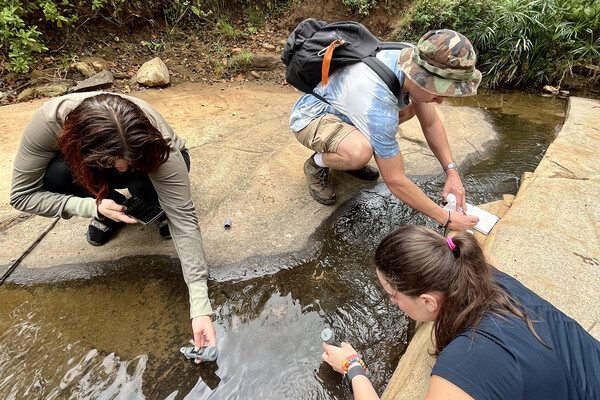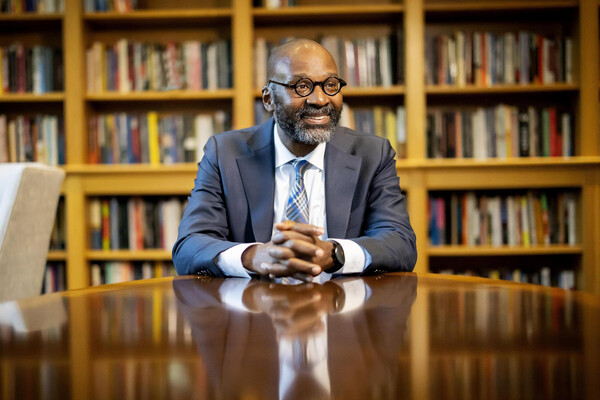
Griffin Pitt, right, works with two other student researchers to test the conductivity, total dissolved solids, salinity, and temperature of water below a sand dam in Kenya.
(Image: Courtesy of Griffin Pitt)
For years, researchers at the Communication Neuroscience Lab at the Annenberg School for Communication and their partners have been studying why some information, like news articles or memes, get shared widely online. More specifically, they ask the question, “What goes on in people’s minds when they decide to hit that share button?”
In 2017, the lab, directed by Annenberg School Vice Dean Emily Falk, a professor of communication, psychology, and marketing, was able to show that the brain activity of just 40 Americans could predict which New York Times articles would get major traction online, among millions of readers. In essence, they had discovered underlying psychological mechanisms to explain why people share, and thus how information spreads.
The lab’s newest study, published in the journal Proceedings of the National Academy of Sciences (PNAS), has strengthened that finding, not only replicating the results, but doing so with people from another country, and using a broader range of news categories including health and climate change. This suggests that the desire to share is based in fundamental human impulses—like presenting yourself in a positive way, seeking status, and connecting with others—which are inherently rewarding and valuable to people.
For the study, participants read headlines and summaries of online New York Times articles while undergoing functional magnetic resonance imaging (fMRI), which allowed researchers to track activity in the brain in real time. This time, however, participants from two different countries—the U.S. and the Netherlands—read and rated their willingness to share a new set of online articles from The New York Times while undergoing fMRI, and the articles covered new topics– both health and climate change. Even in these new and broader areas, the findings revealed not only that participants were more likely to share news that they felt relevant to themselves or to the people they know, but also their brain signals seem to provide clues about whether the news article is widely shared on social media. The team decided to not only test the validity of the value-based model of sharing, but also see if they could successfully create brain-based models that could accurately predict how widely articles will be shared online.
The team found that this was the case. One model based on self-, value-, and social-related thinking (the basis of the value-based model of sharing), among other processes, successfully predicted how widely this new set of articles were shared on Facebook.
This story is by Hailey Reissman. Read more at Annenberg School for Communication.
From Annenberg School for Communication

Griffin Pitt, right, works with two other student researchers to test the conductivity, total dissolved solids, salinity, and temperature of water below a sand dam in Kenya.
(Image: Courtesy of Griffin Pitt)

Image: Andriy Onufriyenko via Getty Images

nocred

Provost John L. Jackson Jr.
nocred